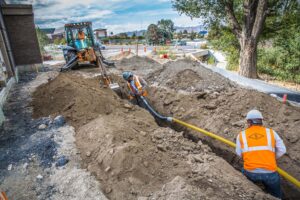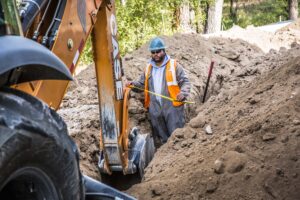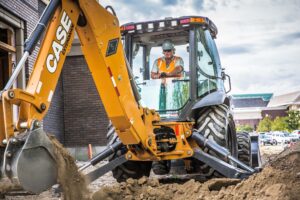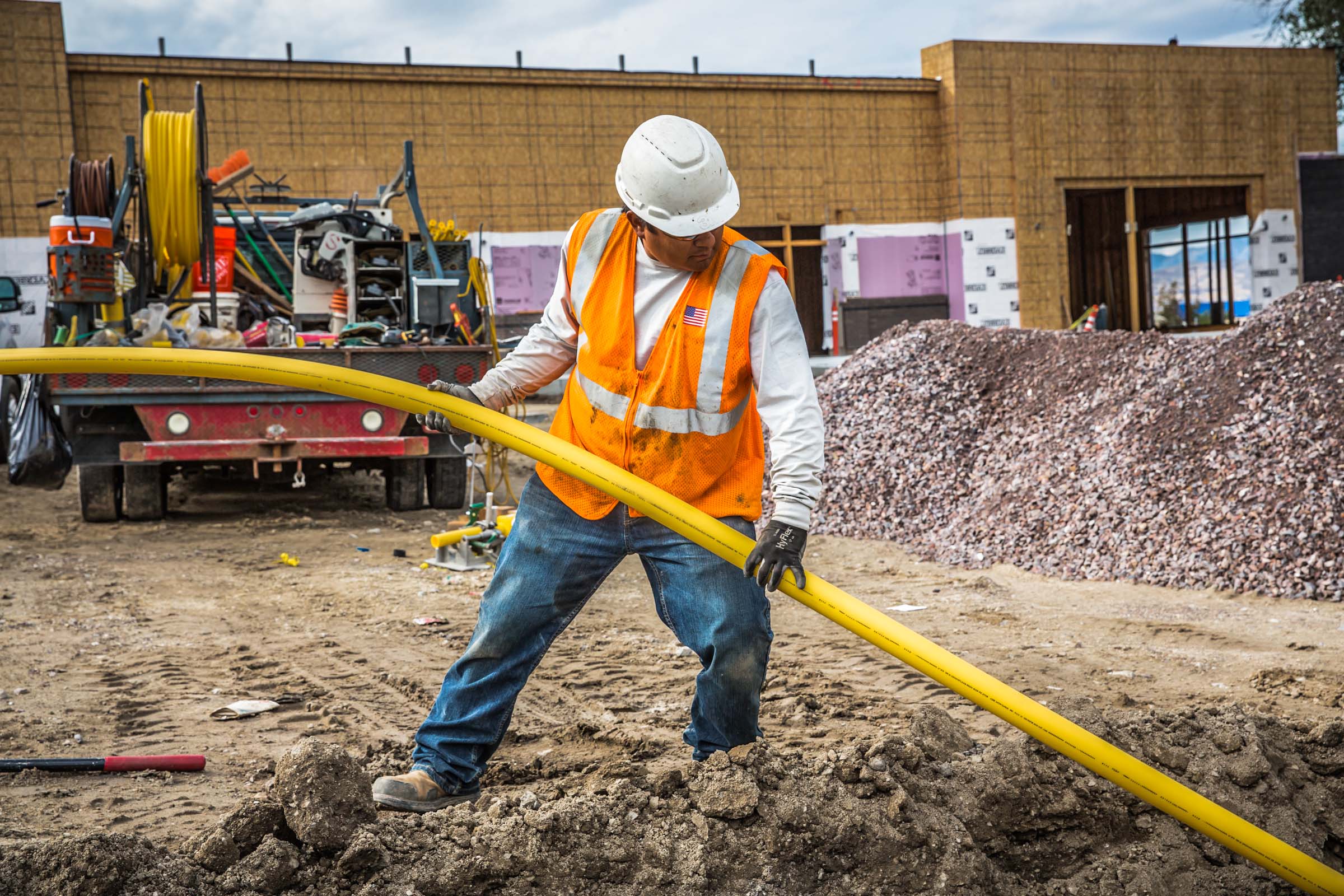 As we usher in the fall season, which “officially” started with the autumnal equinox on September 22nd, our work focus shifts from main gas line installation to bringing heat to local families and businesses. While we spent most of the spring and summer focusing our efforts on getting the main gas lines installed under the roads for new construction, our priority now becomes tying gas lines from the main lines into homes and offices to prepare for the upcoming winter weather.
As we usher in the fall season, which “officially” started with the autumnal equinox on September 22nd, our work focus shifts from main gas line installation to bringing heat to local families and businesses. While we spent most of the spring and summer focusing our efforts on getting the main gas lines installed under the roads for new construction, our priority now becomes tying gas lines from the main lines into homes and offices to prepare for the upcoming winter weather.
The main, or bigger, gas lines are easier to install when homes/buildings aren’t running heat, and before road paving begins. Once we have the main lines in place, we can then start the process of tying lines into each residence or building, ensuring warmth and comfort inside when the mercury dips outside.
 The Process
The Process
Enabling gas service from the main supply in the street to a home can take anywhere from an hour to two days—with the majority of homes (90%) completed in 1 – 4 hours. The other 10% can take considerably longer depending on the layout and a host of other factors. Other factors that add time to the “tying in” process include having to bore through long driveways, parking lots, or across a street and working around other utilities and other contractors at a multi-residential site.
The tie-in process typically involves the following:
- Excavating—or digging a ditch—from the home to the main (we use a CASE 580 backhoe loader to get the job done!)
- Fusing the riser onto the service pipe
- Stringing out the plastic pipe and location wire.
- Measuring, cutting, and fusing a saddle onto the existing main
- fusing service pipe to the saddle.
- Testing from the riser out to the main
- Tapping the line so it has gas
- Backfilling with sand, warning ribbon, and existing dirt or road base.
 Once DSC completes the tie-in process, the gas company (Dominion) is then responsible for coming out (usually within two days to a week) and installing a meter, which completes the process to bring the natural gas utility into the home.
Once DSC completes the tie-in process, the gas company (Dominion) is then responsible for coming out (usually within two days to a week) and installing a meter, which completes the process to bring the natural gas utility into the home.
See Our Team in Action
Learn more about the tie-in process from our teams working on two subdivision projects. Watch this short video to learn about a subdivision installation in Kearns and view this slide show to see the process at a subdivision in Midvale.

